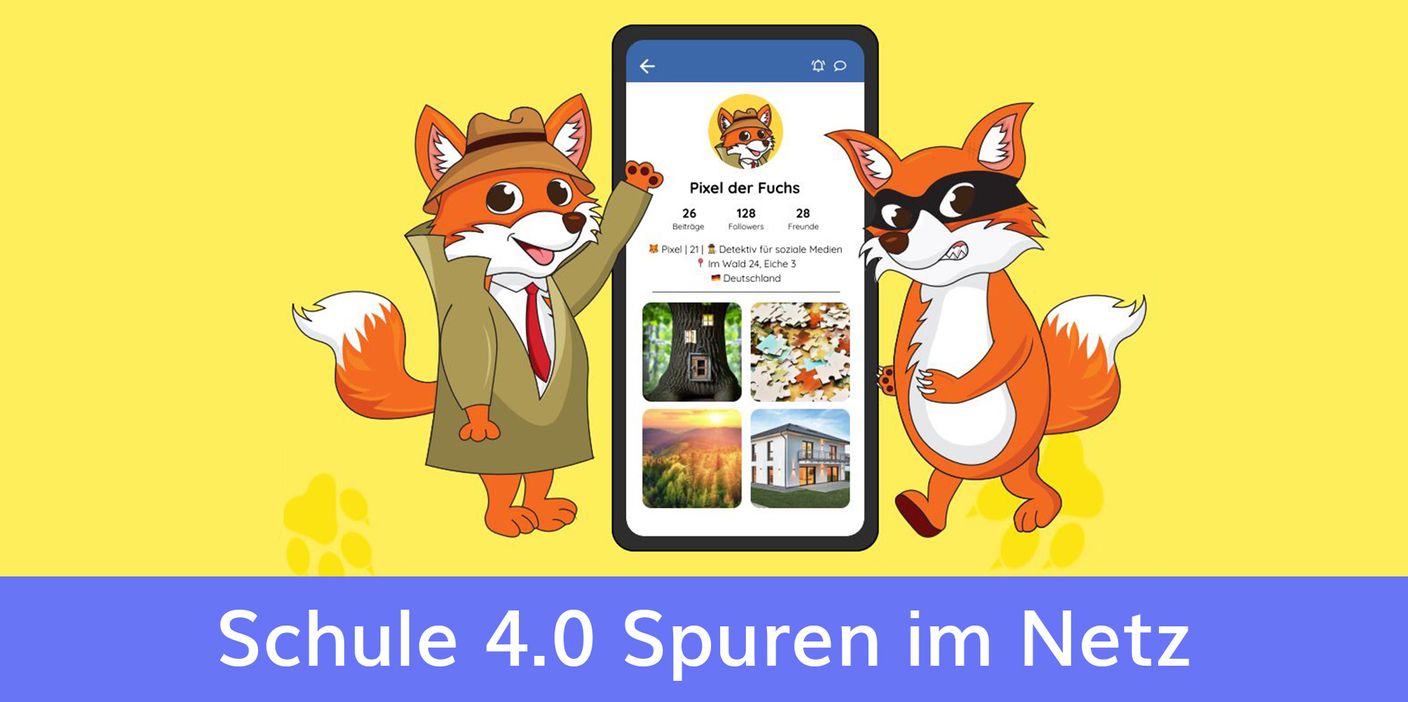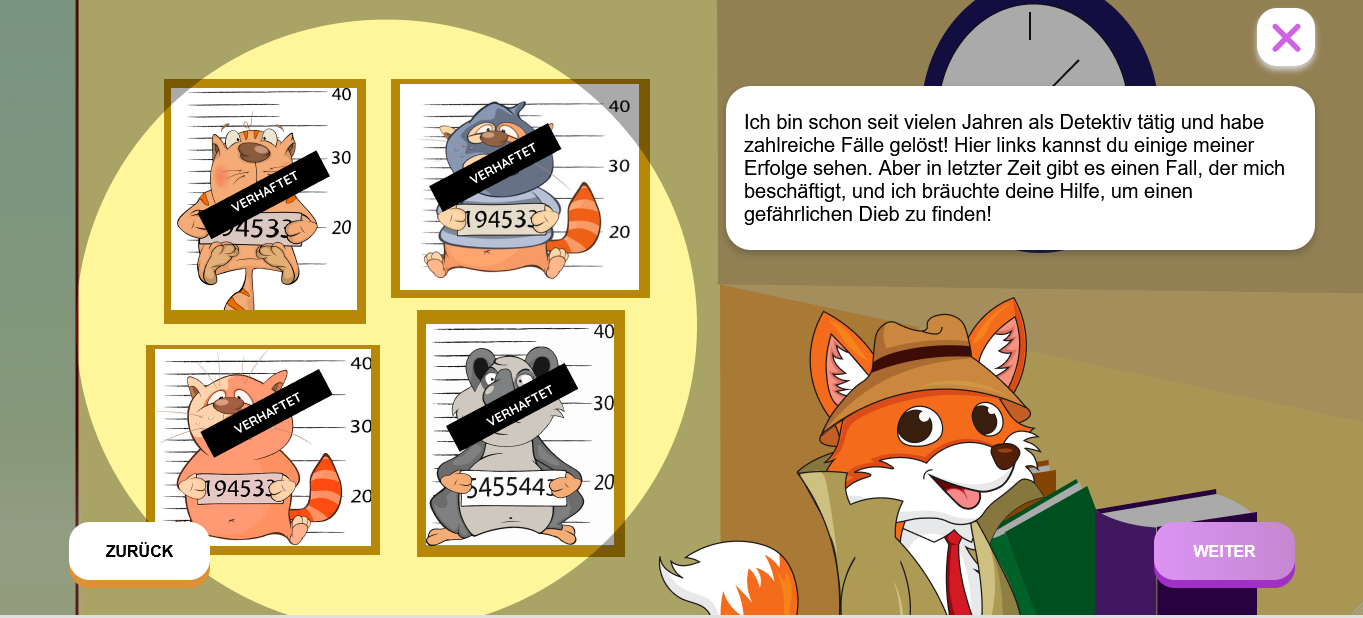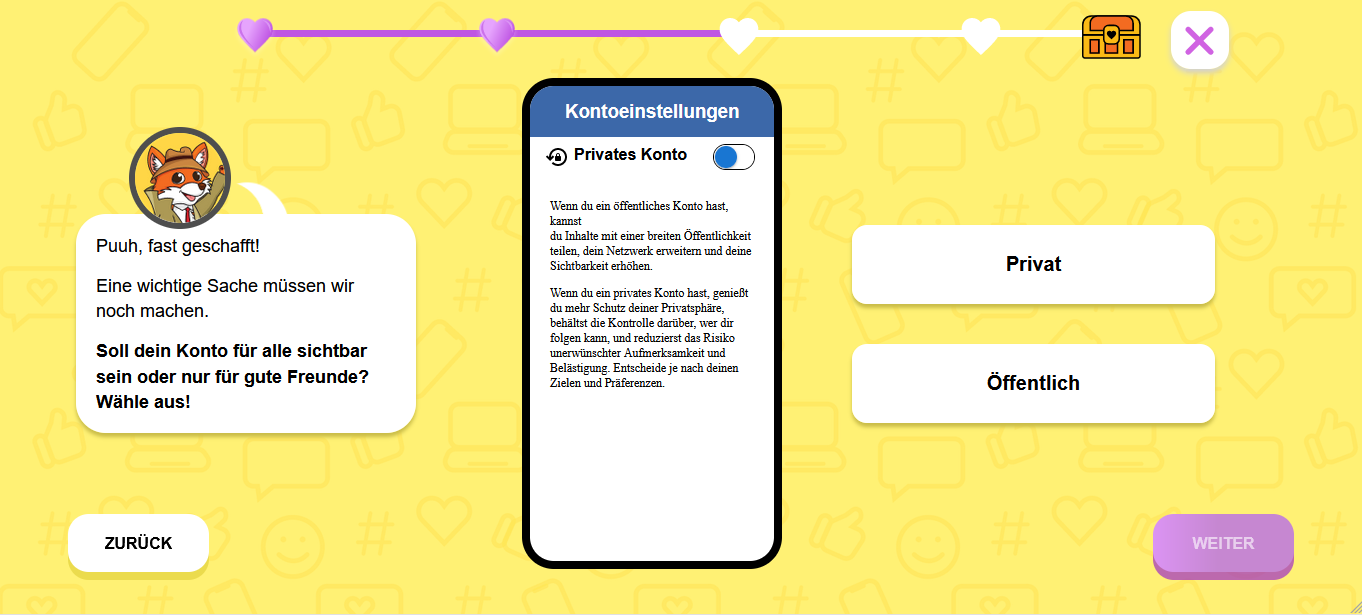Spuren im Netz
- Datum
-
 Caroline Kopp
Caroline Kopp

In the winter semester of 2023/24, five students from Stuttgart Media University (HdM) collaborated to create an educational application for elementary school children. The aim of the application was to teach kids about the digital traces they might unknowingly leave and why it is essential for them to be aware of these traces. Guided by Pixel, a fox and detective, they explore topics such as data protection and security in an engaging and fun way.

Why did we do it?
Children are engaging with social media at an earlier age, often without supervision. Consequently, it becomes crucial to strengthen their digital literacy and awareness of safe online content consumption. While this subject is already part of school curricula, the application is specifically crafted for classroom use, recognizing that teachers may benefit from additional knowledge and support.
How can teachers use it?
The application comprises two units. In the first unit, children learn about data protection by creating an online profile. The second unit involves a scenario where the children are contacted by a stranger, and they must uncover details about the stranger’s real identity. At each step, they are presented with a question or problem and provided with three possible answers to choose from. After completing each unit, they can review how many attempts it took to find the correct answer and discuss their results with the teacher. This allows the teacher to identify any topics that may require further discussion. For additional support we created a guide that includes all of the applications content, which can be found here.

Towards the end of the semester, we had the opportunity to test the application with current 3rd-grade students. Working in pairs, the students completed the units and discussed their results with the teacher. When we asked whether they felt more familiar with social media afterward, 22 out of 24 students responded with a resounding yes.
Further improvements
Before the semester comes to an end, our final steps involve enhancing how students view their results. After completing each unit, students may not remember every single question. To address this, we plan to introduce a more detailed view of their results, enabling them to learn from their performance. Additionally, it would have been nice to improve the user experience by giving Pixel a voice, incorporating sound elements whenever he speaks, however that exceeds the time frame for this project.
In summary, this project has been a valuable opportunity to explore diverse teaching methods and gain insights into how children learn. It has also been useful in further developing our skills in software development and UI/UX design.
Project Team Schule 4.0 - WS23
Students:
- Liljana Stefanelli
- Julian Straif
- Vi Anh Nguyen
- Saga Lannerhjelm
- Caroline Kopp
Cooperation partner from Hermann-Butzer-Schule in Schwieberdingen: Johannes Lux
Also many thanks to Prof. Dr. Sabiha Ghellal from Stuttgart Media University